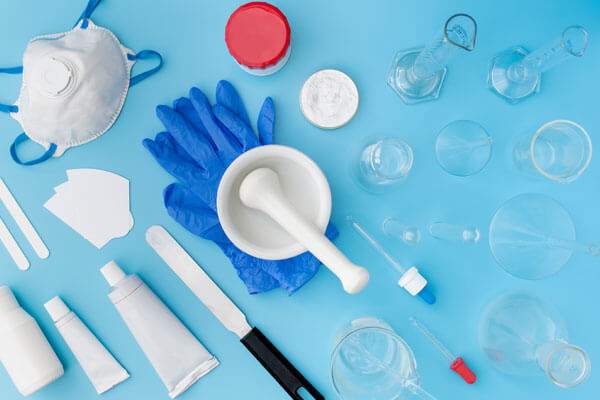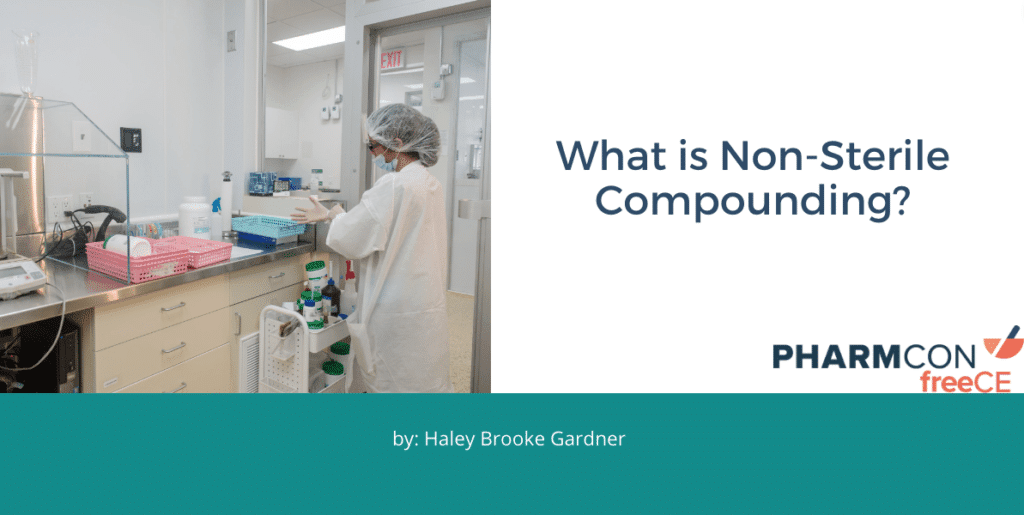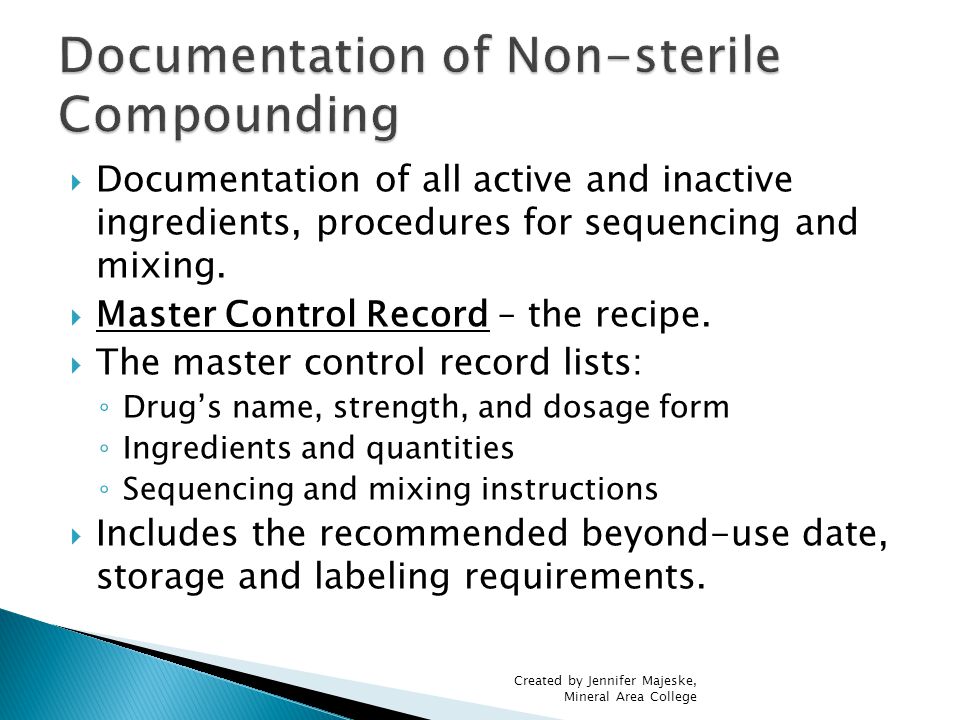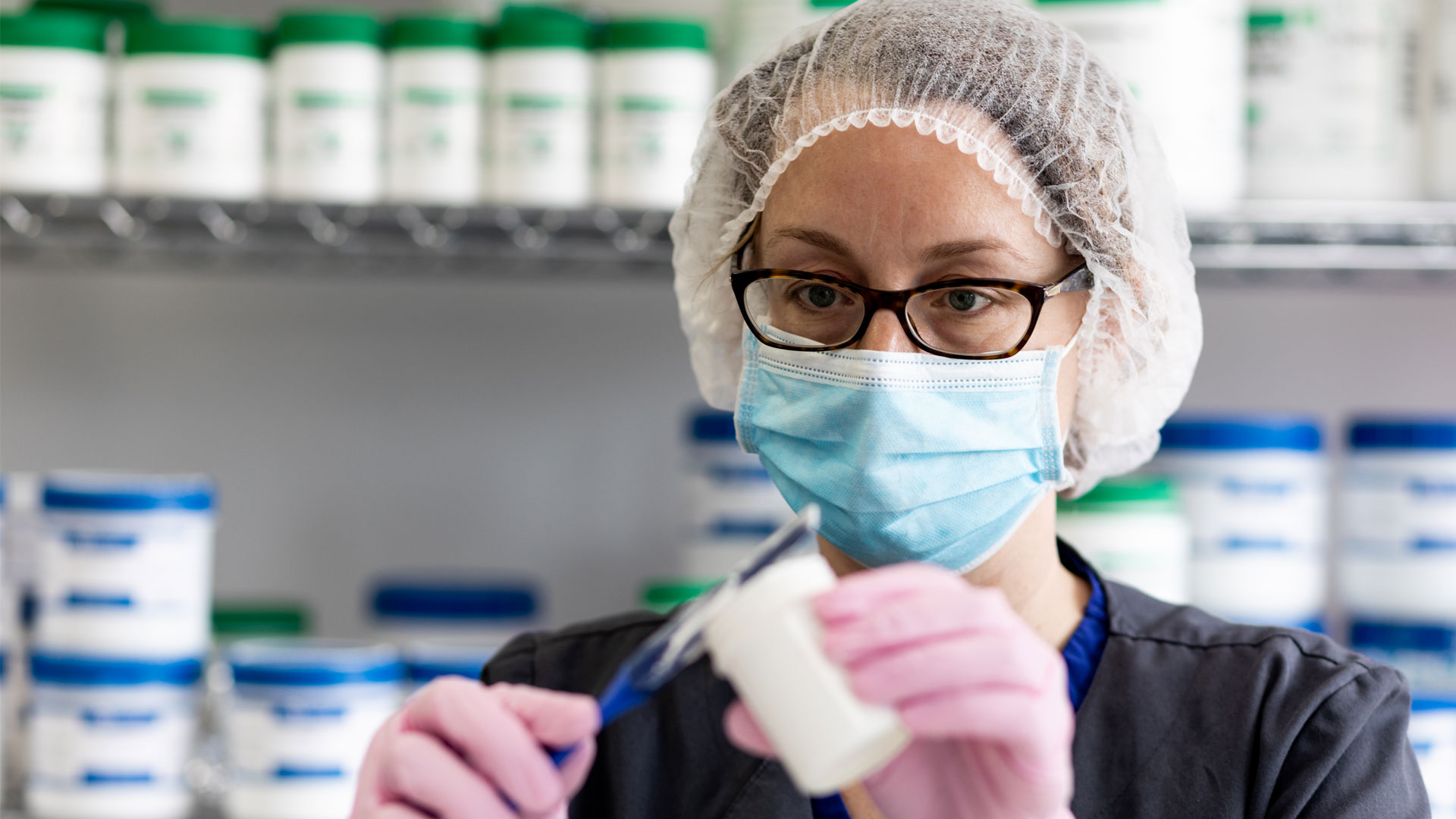Which Type Of Product Can Be Made By Nonsterile Compounding

Imagine a world where medication isn't just a one-size-fits-all solution, but a personalized concoction crafted precisely for your unique needs. A local pharmacist, with mortar and pestle in hand (though, more likely, sophisticated mixing equipment), meticulously combines ingredients to create a cream for a child's eczema, a flavored suspension to make medicine palatable for a picky toddler, or a customized hormone replacement therapy for a woman navigating menopause. This isn't a scene from a bygone era; it's the reality of nonsterile compounding, a practice offering tailored pharmaceutical solutions.
At its core, nonsterile compounding is the preparation of medications outside of a sterile environment, adapting them to meet specific patient needs. This article explores the breadth of products that can be made through this process, highlighting its significance in providing individualized healthcare solutions and addressing unique patient requirements.
The Scope of Nonsterile Compounding
Nonsterile compounding focuses on creating medications that don't require the stringent sterility standards of injectable or ophthalmic drugs. Think creams, ointments, solutions, suspensions, capsules, suppositories, and even some unique dosage forms designed for specific routes of administration. These preparations address a wide array of needs, from dermatological conditions to hormone imbalances, and from pediatric medication flavoring to veterinary applications.
Topical Preparations: A Soothing Touch
One of the most common applications of nonsterile compounding lies in the realm of topical medications. Pharmacists can create customized creams, ointments, lotions, and gels to treat skin conditions like eczema, psoriasis, and acne. They can adjust the strength of active ingredients, combine multiple medications into a single formulation, and even incorporate soothing ingredients like aloe vera or calendula to enhance patient comfort.
Consider a child with eczema who is sensitive to preservatives found in commercially available creams. A compounding pharmacist can create a preservative-free alternative, reducing the risk of irritation and improving treatment adherence.
Oral Medications: Making Medicine Palatable
For children, pets, and even some adults, swallowing pills can be a daunting task. Nonsterile compounding offers solutions like flavored suspensions, chewable tablets, and even lollipops containing medication. This allows pharmacists to mask unpleasant tastes and textures, making medication administration easier and more enjoyable.
Imagine a child refusing to take a life-saving antibiotic due to its bitter taste. A compounding pharmacist can transform that same medication into a bubblegum-flavored suspension, turning a battle into a simple spoonful.
Suppositories and Other Specialized Dosage Forms
When oral medication isn't an option, suppositories offer an alternative route of administration. Compounding pharmacists can create suppositories containing various medications, tailored to specific dosages and patient needs. This is especially useful for individuals who have difficulty swallowing, are experiencing nausea or vomiting, or require localized treatment.
Beyond suppositories, compounding allows for the creation of other specialized dosage forms, such as troches (lozenges) for oral thrush or medicated shampoos for scalp conditions.
Hormone Replacement Therapy (HRT): A Personalized Approach
Nonsterile compounding plays a crucial role in providing personalized hormone replacement therapy (HRT) for women experiencing menopause or hormonal imbalances. Compounding pharmacists can create customized formulations containing bioidentical hormones, matching the body's natural hormones more closely than some commercially available options. This allows for tailored dosages and delivery methods, such as creams, gels, and capsules, to address individual patient needs and preferences.
The North American Menopause Society (NAMS) acknowledges that compounded bioidentical hormone therapy may be an option for some women, though they emphasize the importance of working with a qualified healthcare provider to determine the most appropriate treatment plan.
Veterinary Compounding: Caring for Our Animal Companions
Just like humans, animals sometimes require medications that aren't commercially available in appropriate dosages or formulations. Veterinary compounding allows pharmacists to create customized medications for pets, livestock, and other animals. This includes flavoring medications to improve palatability, adjusting dosages to suit the animal's size and species, and creating alternative dosage forms, such as transdermal gels for cats who resist oral medication.
A veterinarian might prescribe a compounded medication for a dog with a specific allergy to an ingredient found in commercially available medications. Compounding allows for the creation of a safe and effective alternative.
The Role of Regulations and Safety
While nonsterile compounding offers numerous benefits, it's essential to acknowledge the importance of regulations and safety. In the United States, compounding pharmacies are regulated by state boards of pharmacy, and they must adhere to specific guidelines outlined in USP General Chapter <800> and <795> to ensure the quality and safety of compounded preparations.
These guidelines address aspects such as ingredient selection, equipment maintenance, personnel training, and quality control procedures. Adherence to these standards is crucial to minimize the risk of errors and ensure that patients receive safe and effective compounded medications.
The Future of Nonsterile Compounding
As healthcare continues to move towards personalized medicine, the role of nonsterile compounding is likely to expand. With advancements in technology and a growing understanding of individual patient needs, compounding pharmacists will be able to create even more customized medications to optimize therapeutic outcomes. This could involve incorporating genetic information to tailor drug dosages or developing novel drug delivery systems to improve patient adherence.
However, it's essential to maintain a focus on safety and quality. Ongoing research and education are crucial to ensure that compounding pharmacists have the knowledge and skills necessary to prepare safe and effective medications.
A Reflection on Individualized Care
Nonsterile compounding represents a vital aspect of patient-centered care, providing solutions when commercially available medications fall short. It's a testament to the ingenuity and dedication of pharmacists who strive to meet the unique needs of each individual patient. From soothing a child's eczema to improving medication adherence in elderly patients, nonsterile compounding empowers pharmacists to create personalized healthcare solutions that make a real difference in people's lives. This process, though perhaps not always the first thought in modern medicine, showcases the power of tailored solutions, reminding us that healthcare is, at its best, a deeply personal endeavor.


















